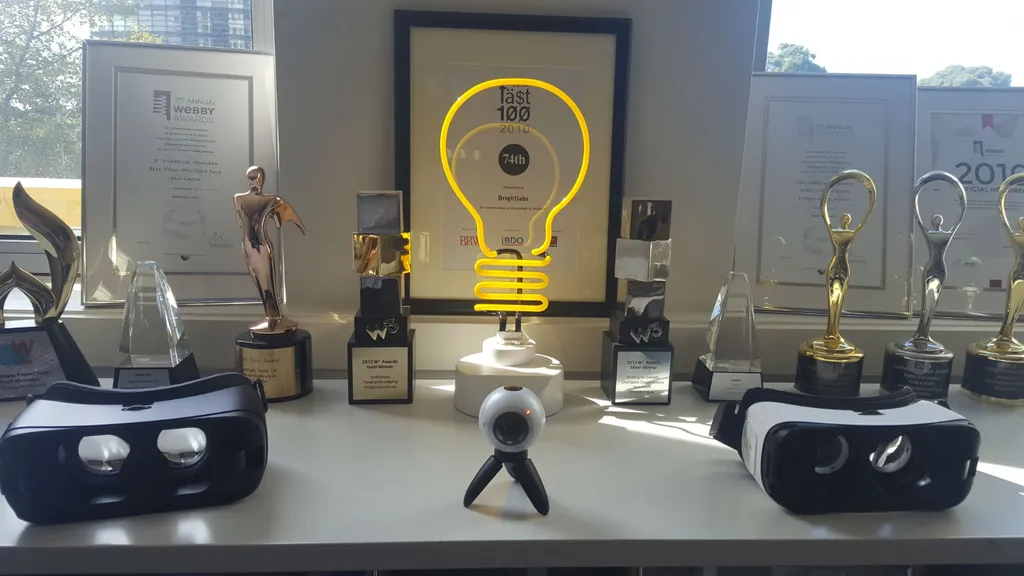When new technology is introduced, businesses are never quite sure how to react. In 2008, marketing agencies were inundated with app requests from clients claiming ‘we want to be on the App store.’ Wanting to be first but not quite sure what they wanted, or why. Other businesses wondered the same thing, and today many still do. If it doesn’t serve a business need, it’s not on the radar.
So when VR became the latest craze, the reaction was similar. ‘Amazing! I want one for my kids…but I’m not sure I see a purpose for my business. What’s the value proposition?’
This is the challenge both VR producers and marketing agencies face with this emerging tech: how can we use it to provide real returns, and not a gimmick to highlight in their next email newsletter.
I spoke with three marketing agencies recently, all of which are looking at the VR space as some clients are wanting to know more. Their clients want to be first….but it will yield them a return?
“I do feel that VR has a way to go before we truly see the real benefits of how it can be used,” says Rishad Sukhia, Director of Brightlabs. “Right now we’re limited by the performance of the technology, but we are seeing big improvements towards better screen resolution, better touch interactions, and tracking. People are used to cutting-edge technology, so I feel it’s important for businesses to embrace VR at a time when it truly will add value to them, not just by jumping on board the most recent trend.”
The interest is there from business owners….or at least, curiosity. Often with new technology, interest can start with the marketing agencies as it’s an opportunity to educate (and then sell) its capabilities and provide business solutions.
‘They’ve warmly received our ideas and shared some of theirs as well,” Rishad continued. “Industries have varied from fashion to security products. We’re currently exploring a solution for an immersive live-sporting experience.”
Es Chandra, founder of Glide, agrees.
“I see VR starting with the industries that are perhaps capitalizing on experience or selling experiences,” Chandra said. “For instance the travel industry or sporting, if businesses can find a way to commoditize these experiences and allow people to purchase them or subscribe to them in some way from the comfort of their own home.”
Events such as sporting experiences in VR rate highly among businesses. 360 streaming opens up a whole realm of possibilities at just the right time. If not consumed in a VR headset, users can still view 360 video through social media, essentially providing a bridge of sorts between today’s technology and tomorrow’s. Introduce 360 video to your audience through what they already use, then educate on how the user experience rises to a new level. A terrific approach in educating the public on new tech in bite sized pieces they can handle.
This is a concept Bartosz Cybulski, CEO of NetMarketing, has taken on board with his clients.
“New technology can be intimidating, and we can never underestimate how often businesses are presented opportunities,” said Cybulski. “Web, apps, print, TV, social media, search engine marketing…it’s difficult for an expert in a trade like hospitality to understand value in digital tools. They turn to us for that answer, so we need to access what will give them the most value.
Bartosz also believes AR growth will also boost VR growth, when the two can work in conjunction effectively to provide real, measurable results. AR, we believe, will serve the market in a different way, Cybulski explains.
“For example, still in health, as VR help patients to experience far away distant places, AR will assist the nurses and doctors, giving the ability to replace screens/monitors, paper documents and the like with on screen displays which merge seamlessly with their surroundings, giving the health care professionals accurate data at their fingertips, allowing them to analyse and diagnose quicker and more effectively,” Cybulski said.
Some companies though, as we know, are well into VR and show no signs of slowing down. A number of major automotive companies such as Isuzu, Toyota and Nissan have all developed VR experiences; AIG created Haka360 to promote the NZ All Blacks prior to the 2015 Rugby World Cup, and Qantas was one of the first, providing GearVRs in first class with their VR experiences so passengers can see where they may wish to take their next trip. The latter is a practical, measurable use that can bring in real dollars. Large companies have an obvious advantage however: they’re large. Small to medium businesses (SMEs) are still lost somewhere in VR purgatory – they know they want to get to the promised land, but are just unsure of how.
https://www.youtube.com/watch?v=Cl7DeLp2o_8
Marketing agencies, therefore, could very well be the frontier that helps bring VR into mainstream. Only time will tell when those first dominoes fall, and the race for selling VR to SMEs begins. Stay tuned…
Marc Pascal is co-founder of BuildVR, and has worked with Marketing agencies across the US, Canada and Australia since 2006.”

























